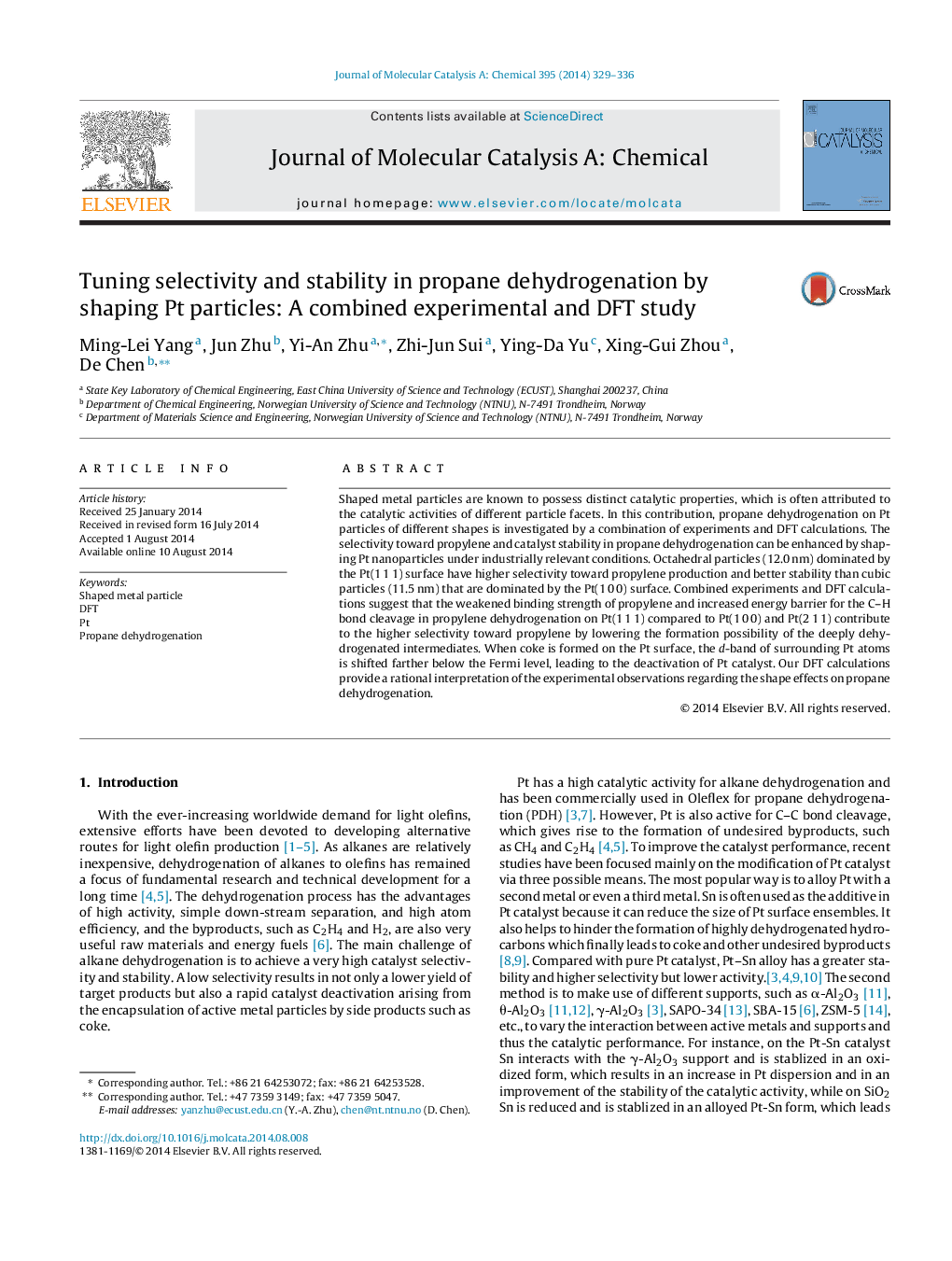| Article ID | Journal | Published Year | Pages | File Type |
|---|---|---|---|---|
| 65330 | Journal of Molecular Catalysis A: Chemical | 2014 | 8 Pages |
•The catalytic performance of Pt particles with different shapes has been examined.•Cubic particles exhibit a higher catalytic activity for propane dehydrogenation.•Octahedral particles have a better selectivity toward propylene production.
Shaped metal particles are known to possess distinct catalytic properties, which is often attributed to the catalytic activities of different particle facets. In this contribution, propane dehydrogenation on Pt particles of different shapes is investigated by a combination of experiments and DFT calculations. The selectivity toward propylene and catalyst stability in propane dehydrogenation can be enhanced by shaping Pt nanoparticles under industrially relevant conditions. Octahedral particles (12.0 nm) dominated by the Pt(1 1 1) surface have higher selectivity toward propylene production and better stability than cubic particles (11.5 nm) that are dominated by the Pt(1 0 0) surface. Combined experiments and DFT calculations suggest that the weakened binding strength of propylene and increased energy barrier for the C–H bond cleavage in propylene dehydrogenation on Pt(1 1 1) compared to Pt(1 0 0) and Pt(2 1 1) contribute to the higher selectivity toward propylene by lowering the formation possibility of the deeply dehydrogenated intermediates. When coke is formed on the Pt surface, the d-band of surrounding Pt atoms is shifted farther below the Fermi level, leading to the deactivation of Pt catalyst. Our DFT calculations provide a rational interpretation of the experimental observations regarding the shape effects on propane dehydrogenation.
Graphical abstractFigure optionsDownload full-size imageDownload high-quality image (176 K)Download as PowerPoint slide
